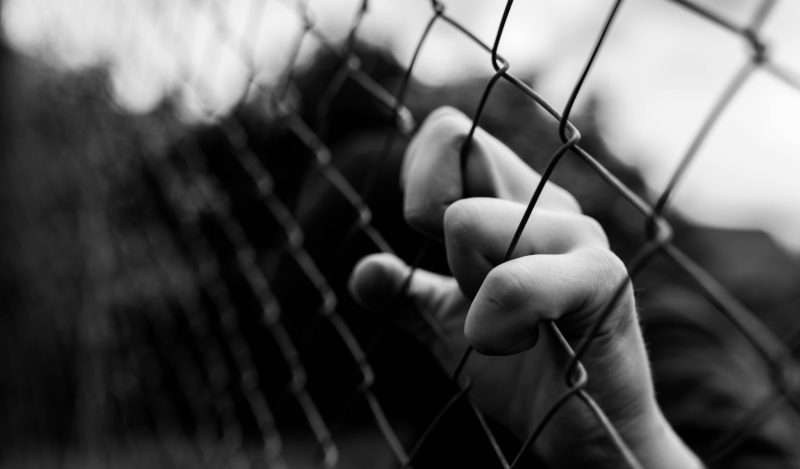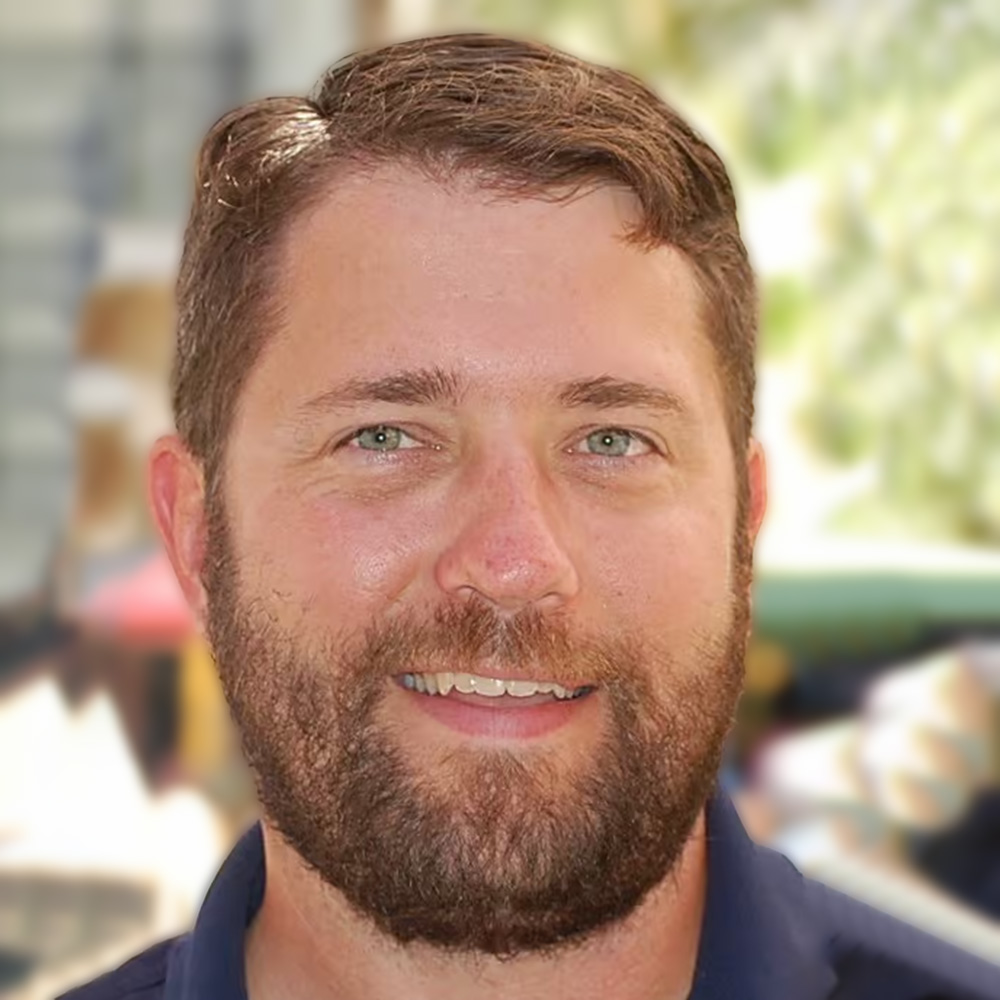Last week, my sons’ school went into lockdown. It wasn’t a drill. There was a real threat. Two high school-aged students, a boy and a girl, were discussing an alleged fight on social media when one of them wrote, “I’m shooting up the school at 9.”
Thankfully, someone reported this information to the school, and the next morning the school flooded with sheriff’s deputies and began the day in lockdown. The two students were arrested and expelled from the school, and now they face second-degree felony charges.
I am not old enough to have grown up in the absence of these threats. The Columbine massacre happened in 1999, when I was a freshman in high school.
Columbine, you must remember, was such an outrageous event that it was the most covered news story of 1999. It remained in the public consciousness long enough to be explored four years later in the 2002 documentary film Bowling for Columbine, which won the Academy Award for Best Documentary Feature and was a commercial success grossing $58 million on a budget of only $4 million.
Two opposing consequences developed from this horrid massacre in what is termed, the Columbine Effect. First, new, strict, security measures were implemented including Zero Tolerance policies. Second, and to all of our misfortune, the new policies face the constant test of a growing trend of copycat shootings.
In 1999, the internet, as we understand it and use it today, was still largely in its infancy. AOL Online discs were everywhere. Signing onto the internet involved a series of noises: a dial tone, the beeping as the online connection point was dialed, and the static communication noises to complete the connection. You often had to unplug your phone line in order to plug into the internet. Anyone trying to call would get a busy signal and probably curse, “Those kids on the internet!”
During the Dot Com Bubble of the late 1990s, social media still did not exist as we understand it today. MySpace was founded in 2003; Facebook in 2004. You still needed a computer to access these sites until the iPhone was released in 2007. Until then, the initial precursor of social media was AOL Instant Messenger.
AOL Instant Messenger was ubiquitous in my friend group throughout high school. We had our buddy lists and chat rooms. We felt excitement when our friends came online and we could instant message them. Not all of our chats were safe, politically correct, or morally upright conversations. There were not yet public forums to post screenshots of disturbing chats. You may have had to print out the chat log to show any threats issued. Even then, they may have been taken only as a joke. Students caught in this manner may have only suffered local consequences such as detention and no wider legal repercussions.
Encyclopedia.com tells us that, until the late 1990s, school violence was largely a problem only in inner-city schools where drugs, gangs, and high poverty led to high crime. Films like 1995’s Dangerous Minds and 1996’s The Substitute were popular at the time. After the highly publicized school shootings, though, school violence became a problem in affluent, suburban school districts as well.
So, my sons began their school day in lockdown. Once the lockdown was lifted, parents rushed to withdraw their children early. We have since received messages that friends have been withdrawn from the school and teachers have resigned. One parent I spoke with in the aftermath explained that was why he and his family homeschool their children.
I’m not a stranger to homeschooling. We homeschooled our children in the wake of Covid lockdowns and absurd masking and distancing policies enforced by our public school district. We left the public school system in favor of a charter school. The charter school, like a private school, at least has the ability to control enrollment and enforce student behavior policies. The students making the threat were immediately expelled. In public schools, they may have been expelled from a specific school, but nonetheless, the overall public school system is still legally obligated to provide them with an education. They will likely end up in another public school after a time in either an alternative school or Florida’s Virtual School. Still, one wonders if the expulsion and subsequent felony charge is enough to make the expelled students plot revenge on the administrators who didn’t get their “joke.”
If you open today’s internet, you will read any number of opinions on why school threats and shootings have not only continued, but have also grown more common. The opinions on this are wide and varied, including social media, violent video games, SSRIs, ADHD medications, the collapse of the family unit, mental illness, social rejection, bullying, media influences, easy access to guns, lack of social connection, inceldom, etc.
Because opinions are necessarily varied on the causes, the proposed solutions must also be necessarily varied. However, mainly because something happened though, action must be taken. Our school has created an Active Parenting group and asked us as parents to pledge not to give our children a smartphone until the end of 8th grade. A well-publicized charity group, Wait Until 8th, has created this pledge.
In what may be considered a contradiction created by modern schooling, the school provides every middle-schooler with an iPad for access to textbooks, school work, and for reviewing grades. There is an internet browser on it for these reasons, and the kids quickly found that most of the controls the school placed on the devices could easily be bypassed simply by using a 3rd party VPN. It is, after all, a part of the human spirit to work around arbitrary rules and restrictions one doesn’t like.
Childhood today is not easy if it ever was. School is more restrictive than ever, and many of the schools’ outward and inward facades resemble Juvenile Detention Centers. Playtime and recess have all been watered down and any dangerous games removed entirely. At home, despite living in an area with many families, it is nearly impossible to find any neighborhood children playing outside without supervision. A quick Google search can find any number of stories of HOA busybodies actively working to suppress any unfettered playtime.
Recently, I attended a birthday party where most of the kids attending were baseball players. At the park, there was a kickball field with bases. The kids ran over to it and began organizing a game of kickball. I was interested to see what would happen without any adult input, so I sat down in the shade and observed.
Before the children could finish organizing their own game, or invent their own, one of the parents waltzed over and took charge. He appointed two teams, and declared himself the all-time pitcher. Rather than the game of kickball, you might remember that resembles baseball with the addition of pegging any baserunner with the ball for an out, the adult-in-charge made it so the kids had to throw the ball back to him on the pitching mound before a baserunner made it to a base in order to get an out. It also turned out that to end an inning, making three outs wasn’t important. No, in this version of kickball, each child in the batting line got a chance to kick the ball. It was all very safe and equitable I guess, but very boring, and interest quickly waned.
Importantly, any sense of danger, agency, or self-governance has been removed from nearly every aspect of childhood. More recently, the children were even told that schooling wasn’t essential. Their schools were shut down, and they were forced online for any interpersonal interactions with their peers. When they returned, they were often subjected to severe scolding for not following bizarre new rules related to masking and distancing policies that everyone implemented with different variations.
In the face of conflicting messaging and an array of authoritative adults who don’t understand the realities for today’s children, how easy is it to fall into an online world of algorithmic consistency? In this world, social media provides an outlet to peers who appear to understand you and the world in which you live. Combine that feeling with the dopamine spikes of constant updates, notifications, and flashing lights on the screen, and I can understand why children are so drawn to the devices. It makes sense why they feel safe saying and doing things that they would otherwise not be inclined to do in person.
Far before the advent of social media, the Columbine shooters existed in this netherworld of the online experience. When it was far more difficult to do, they hosted a blog where they began showing signs of the impending violence. Teachers alerted their parents. They were reported to authorities.
That does not absolve anyone from making threats. That is wrong, and it should be dealt with quickly and punitively. It is an unfortunate reality of our time that these things are often ignored, even when investigated directly by law enforcement, and that they tend to escalate until there is a real problem with real consequences. Eventually, thoughts become realities.
I’m guilty of having used the screens to pacify my children, and I was slow to understand that Social Media has expanded naturally into the video gaming world as well. Games like Fortnite, Minecraft, and Roblox all allow for interaction with other gamers, friends, and strangers alike. Twenty percent of Roblox players are under 9 years old, and 40% are under 12. Like the chat rooms and AIM messages of old, there is little, if any, parental monitoring of the things said in the chat messages of these apps. The same anonymity that makes taboo discussions so easy is ever-present even in the youngest of children.
In many ways, it is the only place a child can find any real agency or control over their lives. It is their account, often on their device. They know the device better than their parents. The parents may not understand how to properly implement the varied parental controls which differ in interface and effectiveness on every device and every app. The child has every incentive to find ways around the controls without telling the parent. There is danger, intrigue, compatriotism, high adventure, and escape from the drudgery of school and everyday life. It is also exactly the wrong place to find all of those things.
The right place is in real life with patient and kind adults who allow the child the liberty to succeed and fail. Adults who can provide the patient and caring guidance needed to turn disaster into triumph, and are not afraid to be gentle, but firm, when discipline is required. It is an imperfect line to draw between liberty and guidance, but when it is done right, the result is a confident and secure individual who can stand up straight in any situation.
Rudyard Kipling’s fantastic poem — If — is called to mind. If they become individuals who can meet with Triumph and Disaster and treat those two imposters just the same, there will never be a need to lash out, threaten, or hurt other people.
Republished from the author’s Substack
Join the conversation:


Published under a Creative Commons Attribution 4.0 International License
For reprints, please set the canonical link back to the original Brownstone Institute Article and Author.









